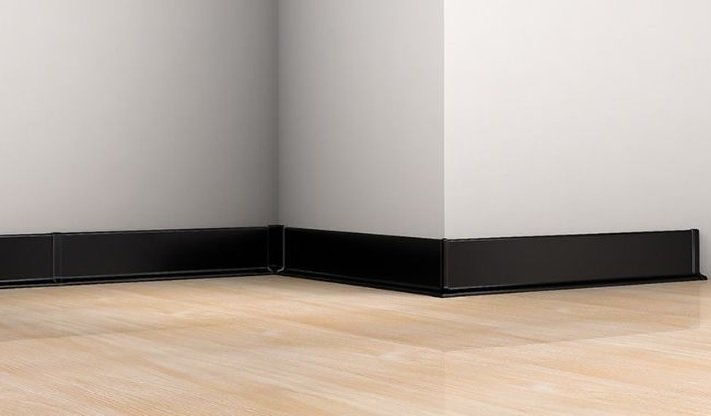In interior design and home improvement, attention to detail often makes the most significant difference. One of those often-overlooked but essential finishing touches is the skirting board. While it may seem like a simple architectural element, the skirting board plays a vital role in defining the boundary between the wall and the floor. More than just functional, it contributes to the overall harmony of a room’s appearance.
Understanding the Purpose of a Skirting Board
A skirting board, also known as a baseboard, is a narrow panel that runs along the bottom of an interior wall. Its primary purpose is to conceal the joint between the wall and the floor, offering a clean and smooth visual transition. In addition to aesthetic value, it serves as a protective barrier, shielding walls from kicks, furniture scuffs, cleaning equipment, and general wear.
This feature is particularly important in high-traffic areas like hallways, living rooms, and kitchens, where movement is frequent. Without a skirting board, the edge where the wall meets the floor would be exposed to direct contact, leading to scratches, dents, and long-term damage.
A Seamless Connection for Polished Interiors
One of the defining qualities of a well-designed space is cohesion. The skirting board helps achieve this by linking the vertical lines of the wall with the horizontal plane of the flooring. This junction is often where small imperfections, such as uneven plaster or flooring gaps, become visible. A skirting board effectively masks these flaws and ensures that the space looks polished and finished.
It also contributes to the sense of structure and proportion in a room. Tall skirting boards can make ceilings appear higher, adding elegance to traditional or formal interiors. Shorter, minimalist styles suit contemporary spaces where clean lines are desired. Regardless of the design direction, the skirting board brings a sense of intentionality and completeness.
Different Styles for Every Interior
Skirting boards come in a wide variety of profiles and heights, making it easy to find the right fit for any home. For classic interiors, options such as ogee, torus, and Victorian-style boards offer ornate curves and layers that echo period architecture. These add character and charm to older properties or formal spaces like dining rooms and parlors.
For modern and minimalist homes, square-edge or chamfered designs deliver a clean and understated look. These styles don’t draw too much attention but still perform their practical role effectively. Some designers even choose to paint skirting boards the same color as the wall for a seamless appearance or contrast them in white or black for added definition.
Homeowners can also choose between pre-finished or paintable skirting boards. Pre-finished options offer convenience and durability, while paintable ones provide greater customization to match or contrast with wall colors.
Material Options for Function and Durability
Choosing the right material for a skirting board is just as important as selecting its style. Each material has advantages depending on the room’s function, humidity levels, and overall design.
MDF, or medium-density fibreboard, is one of the most popular materials due to its affordability, smooth surface, and resistance to warping. It’s easy to cut and paint, making it ideal for DIY projects or budget-friendly renovations.
Hardwood skirting boards, such as oak or walnut, offer strength and a natural aesthetic that complements wood flooring and upscale interiors. These materials are more expensive but deliver long-lasting performance and timeless appeal.
PVC and plastic skirting boards are best for moisture-prone areas such as bathrooms and kitchens. They resist water, mold, and mildew, ensuring the base of your wall stays protected. Their smooth surfaces also make them easy to clean.
Some manufacturers now offer eco-friendly materials that use recycled content or sustainable woods, which appeal to environmentally conscious homeowners.
Ease of Installation and Maintenance
Installing skirting boards is a relatively simple task for professional contractors and experienced DIYers alike. They can be affixed using nails, screws, or adhesive depending on the wall material. Miter joints at corners ensure neat transitions, and flexible caulk can fill any remaining gaps for a flawless result.
Skirting boards are also easy to maintain. A quick dust or wipe keeps them clean, and if they get scratched or scuffed, they can be sanded and repainted rather than replaced. This durability makes them ideal for households with children or pets, where accidental damage is common.
Over time, if interior design preferences change, skirting boards can be updated without major renovation. Swapping out the profile or repainting in a new color allows for an easy refresh that contributes significantly to a room’s new look.
Protecting Walls and Enhancing Longevity
While skirting boards are a design feature, they also perform an essential function in wall protection. Everyday activities like vacuuming, mopping, moving furniture, or even opening doors can result in knocks and scrapes. Skirting boards absorb these impacts, keeping walls intact and reducing the frequency of repainting or plaster repairs.
In rooms with tiled or hard flooring, the bottom of the wall is even more vulnerable. Skirting boards provide a necessary buffer, especially around corners and entryways where activity is highest. In commercial spaces, they can also enhance hygiene by creating a cleanable surface and reducing dirt traps between wall and floor.
A Versatile Detail That Elevates Interiors
Because they are available in so many forms, skirting boards are highly adaptable. They can be subtle or striking, minimal or ornate, classic or contemporary. Some designers use skirting boards in creative ways, such as integrating LED lighting for soft floor-level illumination or using contrasting colors to define architectural lines.
They can also play a supporting role in coordinating design elements like door casings, window trims, and crown moldings. A continuous visual flow between these elements elevates the entire room and makes the design feel intentional and cohesive.
Skirting boards also allow for design continuity between rooms. By maintaining a consistent skirting style across hallways, bedrooms, and common areas, homeowners can unify their space while still tailoring each room’s wall or floor color.
Cost-Effective Upgrade With Big Visual Impact
Compared to other home improvement projects, updating skirting boards is a relatively affordable investment that yields high visual returns. It’s a small detail with big influence, capable of lifting the sophistication of a room without extensive renovations.
For homeowners preparing to sell or rent a property, ensuring skirting boards are clean, well-painted, and appropriately styled can make a strong first impression. They contribute to a perception of cleanliness and care, which can increase buyer or tenant confidence.
Even in older homes with uneven floors or walls, flexible skirting board options are available to accommodate inconsistencies and still deliver a neat result.
For a flawless finish on your next project, trust an experienced painting company in Edmonton to bring your vision to life with skill and precision.
Conclusion
Skirting boards are more than just functional features—they are a design asset that enhances the look, feel, and durability of any room. They provide a clean and finished transition between wall and floor, hide imperfections, and protect walls from everyday wear. With a variety of materials, styles, and installation options available, they can be tailored to suit any space, from traditional homes to modern apartments.


